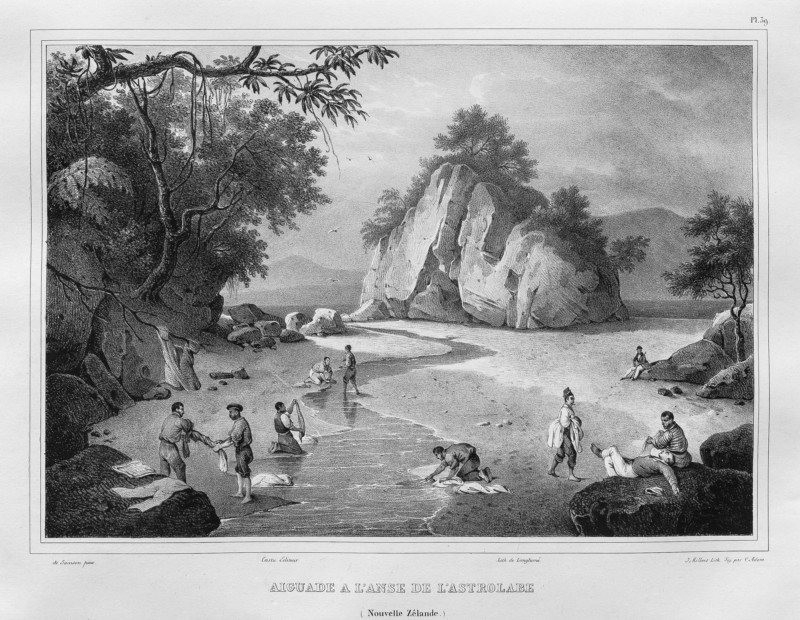DE SAINSON, Louis Auguste;
Watering Place in Astrolabe Cove
1833
Lithograph on paper
360 x 549mm

Original title: ‘Aiguade a l’anse de l’Astrolabe (Nouvelle Zélande)’. Lithographed by Jacques-Gérard Milbert. Figures by Jean-Victor Adam. Plate No. 39 from Jules-Sébastien-César Dumont d’Urville, Voyage de la corvette l’Astrolabe exécuté pendant les années 1826–1827–1828–1829 (Paris: J. Tastu, 1833). Other lithographs from the series can be viewed here.
The following text comes from the catalogue for the exhibition Tirohanga Whānui.
This lithograph records a happy domestic scene at a watering place in Tasman Bay where the crew of the Astrolabe were able to wash their clothes. Looking much the same today as in the lithograph, the place still bears the name Watering Cove.
D’Urville’s account describes a ‘stream of the clearest water which snakes across the sand flowing into the sea’, noting that at high tide the ship’s rowboat was able easily to meet all the ship’s fresh water needs.
Men sit and stand by the stream’s edge doing their washing, a shirt hangs from a tree branch while to the right a sailor reclines nonchalantly with legs crossed, in relaxed conversation with another.
It is interesting to note that the figure drawing in this lithograph, as in others, is the work of Victor Adam, while the landscape elements were done by Milbert and Bès.
The search for fresh water was an ever-present concern for seamen. D’Urville found that in New Zealand creeks near the shore were invariably salty and therefore unsuitable for drinking or washing. As well, fresh water streams were often too small to be useful. This he attributed to the irregularity of the soil, the height of the mountains but above all ‘to the little width of the islands of which that land is composed, which does not permit the watercourses to attain any considerable volume before pouring out into the sea’.
Exhibition History
Tirohanga Whānui: Views from the Past, Te Kōngahu Museum of Waitangi, 15 April to 15 September 2017

